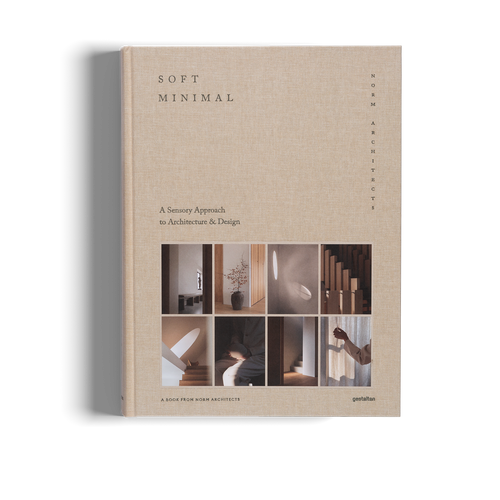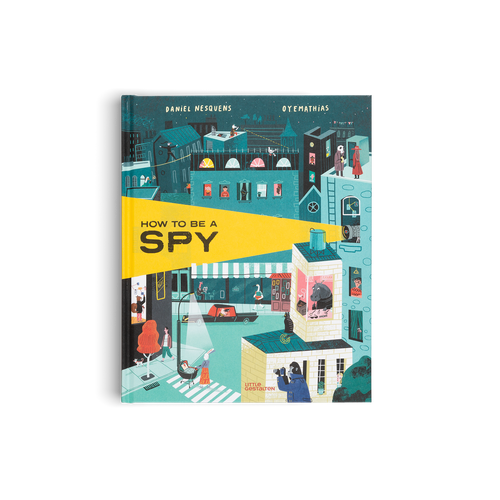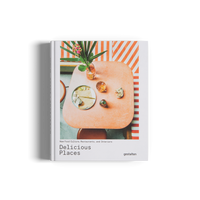
05/2019 food & beverages
In 2018, greenhouse gas emissions reached a record high whilst more recently, the UN's Global Environment Outlook reported that 8 million tons of plastic enter the oceans each year. Global demonstrators and activists such as Greta Thunberg are trying to address a more sustainable way of living head-on, while some organizations are taking matters into their own hands.
"The next 20 years are going to be the most important two decades in human history, so if a concept is not sustainable, it’s not an ideal solution and becomes part of the problem"
The health of our planet is deteriorating, as it stands, future generations are the ones who'll feel the real consequences. In recent times there have been murmurings of a mass-behavioral change regarding single-use plastics. However, when it comes to what is really needed to preserve the future of the planet, it's difficult to know where to start. Tucked away in the old meat-packing district of Copenhagen sits SPACE10, an organization who wants to develop solutions for a more sustainable world.

SPACE10's hydroponic farming system can grow vegetables three times faster than traditional methods with 90% less water, less waste, and without the need for soil and sunlight in a much more space-efficient footprint. (Photo: Nikolaj Thaning)
Innovation hub SPACE10 is a ‘future-living lab’ armed with an overarching vision to define new systems for a better and more sustainable way of life. Backed by IKEA but given total autonomy to experiment on their own terms, the lab is external and non-profit. Their projects explore IKEA’s potential future ventures, beyond home furnishings, while still living up to their vision of creating a better everyday life for people. "We perceive sustainability as a necessity–not a luxury," explains Simon Caspersen, SPACE10’s communication director. "The next 20 years are going to be the most important two decades in human history, so if a concept is not sustainable, it’s not an ideal solution and becomes part of the problem."
"Tomorrow’s Meatball" is a visual exploration of the future of food, focuses on alternative ingredients, technological innovations, and uncharted gastronomic territories, that we need to consider to combat our unsustainable appetite for meat. (Photo: Lukas Renlund)
With wide-ranging projects relating to the future of food, mobility, and the redefinition of co-living spaces, the lab has produced many significant ideas. One of the highlights is the 3D printed meatball. As demand for meat is on the rise, farming the animals for their meat has a huge impact on global warming. "Tomorrow's Meatball" is an experimental approach to food production that involves lab-grown meat, algae harvesting, and quite surprisingly 3D food printing.

"The Growroom" is an open-source, spherical garden that enables people to grow food locally and sustainably. An example of food-producing architecture, it was designed to trigger conversations about how to meet the rising demand for food by growing it in our cities. (Photo: Alicia Sjöström)
Other significant works include the creation of hydroponic farms in basements able to grow their own fresh vegetables without natural daylight, a project SPACE10 calls "Urban Farming." Whilst "The Growroom" is an urban farm pavilion and example of food-producing architecture. It was designed to trigger conversations about how to meet the rising demand for food by growing it in our cities.
We caught up with Simon to find out a little more about how SPACE10 devises their future-friendly ideas.
In the future, micro-algae could be used as a form of nutrient-rich food, as a replacement for soy protein in animal feed, in the development of biofuels, and as a way to reduce carbon dioxide from the atmosphere. The "Algae Dome" was therefore designed to spark conversations about how we might grow large amounts of nutritious food in cities. (Photo: Niklas Adrian Vindelev)
With so many incredibly interesting projects coming out of the lab, can you shed some light on the processes involved in delivering them?
The starting point is always to explore the bigger changes expected to affect people in the coming decades–that could be anything from rapid urbanization, food security, or resource scarcity–the world is not short of challenges. We also research how technological breakthroughs such as augmented reality, AI, or digital fabrication tools can empower people in completely new ways. So in SPACE10 Research, we try to identify opportunities for a better everyday life.
"We would never be able to deliver that diversity and creativity with a single, permanent, in-house team; just imagine if Apple had to develop all their apps themselves"
Then we have SPACE10 Design, that acts upon identified opportunities to create better and more sustainable ways of living. Embracing a holistic mindset, we aim to design solutions for people and the planet.
And finally, we have SPACE10 Culture, which connects with people from around the world to exchange ideas, spark discussions, and to empower people to drive positive change.
These are the three main pillars of SPACE10, but we also have a saying here which is, ‘if you are the smartest person in the room, you are in the wrong room.’ We need to surround ourselves with people who are smarter than us and who possess other skill sets than ours, so we constantly invite people to work with us. This approach secures continuously fresh perspectives, speed, and connects experts in so many different fields. We would never be able to deliver that diversity and creativity with a single, permanent, in-house team; just imagine if Apple had to develop all their apps themselves.

"Spaces on Wheels" used augmented reality and lush design language to prototype a fleet of fully autonomous vehicles and empower people to explore them in the context of their own lives. Including an autonomously driven office space. (Photo: SPACE10)
With regards to AI, AR, driverless cars, the future of food, co-living, and the other subjects you research, do you have a particular topic that interests you the most?
What I deeply care about is people. The technologies and concepts we develop are merely opportunities to empower people in new ways, but the exciting part is how these solutions can impact people for the better.
A good example is the recently released "SolarVille" project, that combines blockchain technology, solar panels, and beautiful design to explore how we could democratize access to clean energy. Of course, it's fascinating to work on the frontier of new technologies, but the part that really fascinates me is how a working prototype potentially can create a solution for the billion people, who today have little or no access to electricity.
"Our ideas can become a reality through a multiple of ways. One is that we have chosen to be completely open to and share all our ideas and research with the public. This way our ideas become portable, provoke imagination, and inspire others—this results in a bigger impact than we could achieve alone. The ones imagining the future often end up shaping it"

A crafted miniature wooden village demonstrates how with project "SolarVille" communities could create their own circular clean energy system. The project used solar panels and blockchain technology to create a functioning energy system via a neighbor-to-neighbor trading scheme. (Photo: Irina Boersma)
Once you’ve carried out research on a particular subject, completed a project, and written a report, what happens next? How will these ideas become a reality for the masses?
We have multiple ways of doing that. One is that we have chosen to be completely open to and share all our ideas and research with the public. This way our ideas become portable, provoke imagination, and inspire others—this results in a bigger impact than we could achieve alone. The ones imagining the future often end up shaping it.
Secondly, if a design concept or solution feels strong and the technology is mature enough, then we can try to scale it. SPACE10 is proudly supported by IKEA and we are set up to challenge and inspire IKEA through our research, concept development, prototypes, and pilots. We pursue radical solutions and explore further into what IKEA is already doing or naturally set up to do. SPACE10 is not meant to execute on IKEA’s existing business plans, but to influence future strategies, and to potentially develop the IKEA concept in new directions. This means that IKEA can scale our ideas if they believe in it as well.
"Our design concepts explore beyond the present, which means that often the policies or the technology are not mature enough to be able to implement our ideas at scale yet. But that is fine, our main purpose is to be ready for a change"

SPACE10 was formed in 2015. The research element of the organization explores the bigger changes expected to affect people in the coming decades and tries to identify opportunities for a better everyday life. Whereas the design element acts upon identified opportunities to create better and more sustainable ways of living. (Photo: Hampus Berndtson)
For instance, we introduced Londoners to LOKAL, a salad bar, where all salads are grown onsite. A couple of days ago it was revealed that IKEA is testing that concept instore.
However, our design concepts explore beyond the present, which means that often either the policies or technology are not mature enough to be able to implement our ideas at scale yet. But that is fine, our main purpose is to be ready for a change.

The "Bug Burger" comes on a white-flour bun, topped with relish, beetroot, and blackcurrant ketchup, chive spread, and hydroponic salad mix. Each patty contains 100g of beetroot, 50g of a parsnip, 50g of potatoes, and 50g of mealworms—the larval form of a darkling beetle. (Photo: SPACE10)
In Delicious Places, SPACE10’s contribution looks at the future of food. Can you tell us more about SPACE10’s "Bug Burger?" What was the insight behind it and, more importantly, how does it taste?
Well, it's no secret that our food production system is broken and humans' appetite for meat is becoming a problem for everyone on the planet, so we started exploring more environmentally friendly sources of protein. We looked at edible insects, which have been heralded for their taste by cooks and gastronomes and for their low ecological impact by environmentalists, plus for their nutritional content by public health scientists–making it a viable addition to our current menu. That is why our chef developed a Bug Burger, made with mealworms, and it's delicious.

The "Dogless Hotdog" is SPACE10's twist on the classic snack and shows that healthy and sustainable food need not be bland. It’s made with dried and glazed baby carrots, beet, berry ketchup, mustard and turmeric cream, roasted onions, cucumber salad, and a herb salad mix. (Photo: Kasper Kristoffersen)
Right now we're finalizing our first cookbook. The book is a collection of delicious, sustainable, and future-proof recipes that help us eat better both for ourselves and the planet.
SPACE10 features in our recent release Delicious Places which explores a new wave of food culture.


















